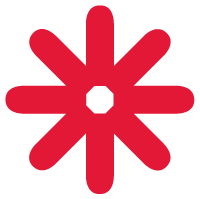What are the dreams and aspirations for your program?
What are the possibilities of your program for the future? How does your program speak to the challenges we face in the 21st century? What could your alumni be and do with what they've gained in your program?
What do you want your students to know, do, and value in the future because of your program?
Dream a big vision for your program. Imagine how innovative elements can become core to the experiences of your teaching and students' learning.
Questions to Ask:
- What is the ideal vision of your program?
- What are the goals and expectations for your students?
- What do you want your students to know, do, and value in your program?

Support for Visioning
External Resources
- UC San Diego's "Building a Vision"
- Welsh Government's "Developing a Vision for curriculum design"
- WesternU's "Curriculum Planning"
Brainstorm Workshop Outline
There are many ways to articulate the dreams and vision for your program.
Below is an outline of a sample workshop that combines individual thinking with group discussion aimed toward articulating a program vision.

Individual Thinking
Before coming together as a group, ask program proponents to dream the biggest dream they have about this program and articulate the content, skills, and values that would be part of this dream.
Ask them to write this down - specifying content, skills, and values - and be prepared to share their thinking (although not necessarily the document) when the group meets together.
Tips
- This step would ideally be completed before coming together in workshop. However, if this is not able to happen, ensure people know ahead of time that this question will be asked and invite them to do some individual thinking ahead of time.
- While program development usually centres faculty members' ideas, dreams about the program can also be solicited by students, staff, alumni, community members, businesses, and other stakeholders. How might these ideas be gathered ahead of a curriculum development meeting?
Group Discussion
Bring program proponents together as a group. Have a discussion about the future graduates of this program be entering.
- What is the world they will contribute to?
- How will they be a leader in this world?
Tips
- In this initial discussion, focus less on the program and more on the environment that alumni of the program will be part of following graduation. This creates a common view for post-graduation that the program should work toward.
Sharing Ideas
Using a visual brainstorming tool such as Jamboard, ask proponents to add their individual thoughts developed in Step 1 to a shared space related to what students should know, do, and value by the end of the program. We've provided a template here.
Before contributing to the communal list, invite individuals to edit or revise their ideas to reflect the group discussion on the future alumni will be part of.
Tips
- This activity could be done in person using post-it notes. It could also be done as a "graffiti" activity, where people walk around and write their thoughts in designated stations with the "know," "do," and "value" headings. The key aspect of this step is that individual contributions all come together in one communal place. It works even better when individual ideas can be moved around on paper or virtually.
- Note that while this step brings everyone's ideas together, it is beneficial at this stage for individual contributions to be anonymous. It creates an even playing field for contributions and ensures everyone's thoughts can be part of the whole.
Grouping Themes
With the thoughts of all individuals shared in one place, group together shared ideas, themes, and/or concepts. Maybe even name these groups to demonstrate their connections.
You can also identity unique ideas or outliers or ones that reflect the conversation about the future.
The goal of this step is to bring pattern to everyone's thinking and demonstrate commonalities, repetitions, and shared commitments that will become foundational to the program you're developing.
Tips
- This sorting and naming step can be done by the group, but it could be also done by one designated member of the group or by a third party, such as curriculum support from the Vice Provost Academic Office or Teaching Commons. An outside set of eyes may see curricular patterns that experts in the field wouldn't notice right away.(1)
- While you are doing this grouping and sorting, ensure that nothing is deleted. Some ideas or concepts won't be as prominent as others, but these can be part of its own group that can be reassessed at anytime.
Reviewing Brainstorm
As a group, take a look at the groupings of ideas, themes, and/or concepts and assess whether they reflect the content and skills that people envisioned as part of this program.
- Does it make sense to name these groupings? Name them?
- Are things missing from the groupings? Add them in!
- Are the valued elements of the vision of the program included? Ensure they are highlighted!
Review York University's priorities and commitments, especially related to decolonization, sustainability, anti-racism, experiential learning, internationalization, and others.
- Are these reflected in your groups?
- How can they be more integrated?
These thematic grouping can act as a useful concept organizing for curriculum design.
Decide what is the best next step for you
Steps 1-5 ensured that everyone could contribute to the dreams of your program and that these dreams could be organized for further use. This work is the foundation for your program development.
Depending on how the groupings and discussions went, you can do one of three things next. All three need to be completed, but one step might be more logical for you to start with:
- Begin to design the curricular elements of your program (i.e. defining the Learning Outcomes, credits, and courses)
- Research curricular innovations, market trends, and student data and include these as into the notes related to your program. York's Office of Institutional Planning and Analysis (OIPA) can support some of this work.
- Write a vision statement for your program that reflects your dream. This could be an internal vision shared amongst faculty and/or a vision that will become public and articulates the program objectives.
As you work through these three elements, explore how they work together and will modify and revise the other. This iterative process of curricular exploration is important in developing a sound, forward-thinking curriculum that represents the values shared within the program.

Interested in renewing or innovating your curriculum?
Explore our resources or contact our Program and Curriculum Development Specialist for support.
